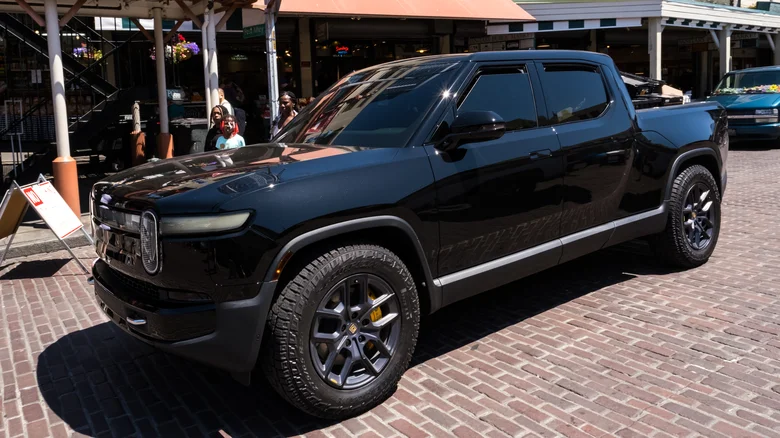
Rivian’s Electric: One of those road safety elements that you should only glance at from a distance when driving past is the guardrail. Even though they seem harmless, what’s on the other side usually ends up being worse, so we frequently ignore them until we need one. A guardrail can, in the words of the U.S. According to the Department of Transportation, “deflect a car back onto the roadway, slow it down until it stops, or, in some cases, slow it down and then let it proceed past the guardrail.”
If, however, the vehicle is much too heavy for the guardrail and it glides through the metal like a ribbon, then the guardrail is rendered useless. To simulate a typical highway crash, a 7,000-pound 2022 Rivian’s electric R1T truck was tested in collaboration with the U.S. Army Engineer Research and Development. The vehicle was launched into a guardrail at a 25-degree angle and 60 mph. The Rivian’s electric sliced through the rail with ease, soon coming to rest against a wall of concrete. While numerous petrol trucks are likewise in that weight class and may have a similar outcome, the problem may lie with that specific Rivian’s electric and similar big electric cars.
We’re going to need a bigger guardrail

In contrast to typical guardrails, which are installed to shield a car from potentially dangerous situations like a ditch or cliff, the Rivian ‘s electric in that test merely stopped at a concrete barrier. Highway guardrails, which were built decades ago for far lighter vehicles than those of today, may not be able to support the weight of many modern cars, much like athletes are becoming too huge for their sports.
While You Care for Your Car, Care for Your Child’s Future Too 💖
A fun and educational book every parent should gift their kid.
 Get Kiddy Store Fortune Now
Get Kiddy Store Fortune Now
Used in the test and across the nation, the Midwest Guardrail System (MGS) was built to support trucks weighing up to 5,000 pounds. Numerous contemporary automobiles surpass that limit, such as the well-liked Ford F150, whose most recent models normally weigh between 4,000 and 5,700 pounds. Occasionally, several SUVs and pickup trucks surpass that limit significantly.
Because Rivian’s electric vehicles’ hefty battery packs can cause them to weigh 20 to 50 percent more than gas-powered vehicles, which have lower centers of gravity, the University of Nebraska test focused exclusively on electric vehicles. The authors express concern about the fact that “EVs are involved in run-off-road crashes at about the same rate and speeds as petrol vehicles,” according to research from the Midwest Roadside Safety Facility (MwRSF). This implies that the impact energy of an electric vehicle colliding with a roadside barrier may increase by 20 to 50 percent.”
Considering numerous variables are at play and this is only one test, it is challenging to make broad conclusions from it. Compared to comparably weighed electric vehicles, there are considerably more heavy petrol vehicles on the road. Even so, most gas-powered cars weigh no more than 5,000 pounds. An EV is also available for less than that weight. More testing is on the horizon. But those guardrails will start to look like floss and will need to be updated if the weight of petrol and electric vehicles keeps rising.
